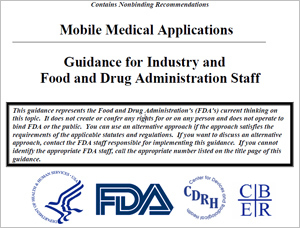
But, guidance documents are important because the FDA tends to follow its own guidance (but not always). What is the difference between laws, regulations, and guidance documents? The FDA must follow a set of laws, which are passed by Congress, and the FDA routinely issues regulations and guidance documents. Laws One of the primary laws establishing the framework within which the FDA operates is the Federal Food, Drug, and Cosmetic Act (FD&C Act) (reference edition available from the FDA here). The FD&C Act is amended by Congress from time to time. Some of the more significant amendments include the Orphan Drug Act of 1983, Food Quality Protection Act of 1996, the FDA Food Safety Modernization Act of 2011, and others. (List of significant FD&C Act amendments.) The FDA develops regulations based on the laws that are set forth in the FD&C Act as well as the other laws under which the FDA operates. Regulations issued by the FDA are federal laws and are codified in the Code of Federal Regulations.Regulations In issuing regulations, the FDA follows the procedures set forth in the Administrative Procedure Act (APA). Broadly speaking, the APA sets for a Notice and Comment Rule Making process, which requires that regulatory agencies issue a proposed regulation, allow time for public input, and then issue a final regulation. More information about this process is available here (PDF, Federal Register FAQ), here (Center for Effective Government), and here (LSU Public Health Map). Guidance Documents After a regulation is issued, the FDA may determine that it needs to provide stakeholders with more information on how the FDA intends to exert (or decline to exercise, as the case may be) its regulatory authority. The FDA does this through issuing Guidance documents. The FDA follows the procedures required by its "Good Guidance Practice" regulation to issue FDA guidance. FDA guidance describes the agency’s current thinking on a regulatory issue. Guidance documents must not set new legal standards or impose new requirements. Unlike regulations, guidance documents do not contain amendments to the Code of Federal Regulations and are not subject to the notice and comment process. Are FDA Guidance Document Law? No. As the FDA makes clear, the FDA guidance documents are not legally binding on the public or the FDA. BUT, the FDA has come to rely on guidance documents as a means of informal policy making. By telling industries when it does and does not plan to act, the FDA is giving industry stakeholders notice of its position on certain issues (e.g., how the FDA intends to treat mobile medical apps). As a result, impacted industries would be wise to take heed and pay attention to the guidance documents. So, for practical purposes, FDA guidance documents are laws. For more on the FDA and why it issues guidance documents, please see the following law review articles:
|




